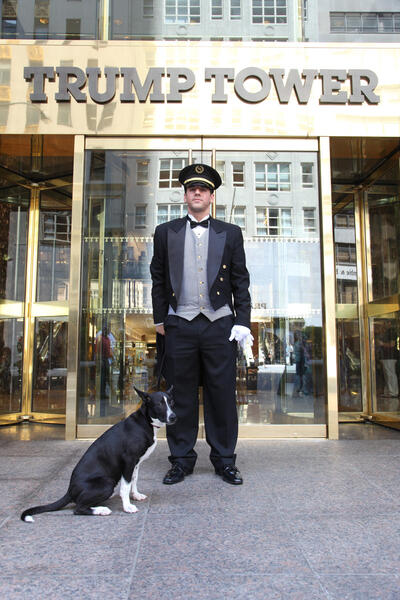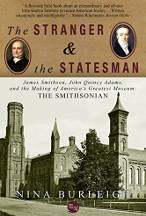
AS ORIGINALLY PLANNED, our midwinter Mexican vacation was supposed to be a sedate, even sophisticated affair: nesting in a sun-dappled house in historic San Miguel de Allende, strolling the cobbled lanes, sipping coffee on the square next to the apricot-colored 17th century Parroquia and snagging cool art treasures made of pressed tin. After a few days of colonial elegance, though, our kids were utterly bored, and even I was longing for a Pacific beach--seven hours away by car. So before sunrise on a morning halfway through our vacation, we piled ourselves into a rental car and drove off vaguely westward. The highway took us across the high, dry plateau 6,000 feet above sea level, and then slowly downward into the green fields of Michoacán, Mexico's breadbasket. By eight o' clock, we were in the midst of a giant marshland populated by hundreds of thousands of migratory birds wintering in the south. Through the car windows, we bore witness to a primordial scene out of the Garden of Eden, myriad bird species eating breakfast and a few fishing boats setting out for the day with the so-called butterfly nets that the Aztecs used.
This pastoral vision ended abruptly at a diesel-scented industrial wasteland, the exurbs of a city called Morelia. Our directions advised that this could be the last place to gas up the car before tackling the 200 miles or so to the beach.
Pulling into a Pemex station with a mini-mart attached, my eyes were drawn immediately to a critter curled up against the curb where we parked. At first glance, it looked like a dead rat. Rather than keep this observation to myself, I blurted out something to the effect of, "Oh no, what is that?" and before I could say "Heel!" our children were out the back door of the sedan and poking their toes at the poor creature--which, on closer inspection, turned out to be a puppy with dull, sleepy eyes and a coat of dingy fur so worn away by malnutrition and skin disease as to suggest, perhaps, some Mexican hairless in its bloodlines.
My five-year-old daughter, Lulu, an animal lover who has made pets of potato bugs and weevils, was already caressing the filthy creature, which was now up and bobbing about in a friendly, if dazed, manner. My instinct was to ignore it, and I quickly shooed the kids away. I have learned a few lessons about picking up strays, and I generally try to avoid it, but a few minutes later, as I noticed it ambling across the parking lot straight toward three lanes of morning rush hour beltway traffic, my canine-loving instincts took over. I knew if I let the animal walk out into traffic, its demise was going to haunt me for days. While my husband was inside the mini-mart, oblivious, choosing between the sugared donuts and the jalapeño chips, I grabbed our two-liter bottle of purified drinking water, a towel and a container of rosemary and thyme hotel shampoo. With the kids helping, we held the wriggling pup in place while rivulets of perfumed black water ran off its belly and onto the parking lot surface. A brief discussion with the gas station attendant, whose expression as we washed the dog indicated he considered us escapees from a lunatic asylum, confirmed the obvious: The puppy was an unwanted stray who wouldn't be missed.
By the time my husband stepped out of the store, the dog was wrapped in a towel, nestled on the backseat of the car between Felix, nine, and his sister, all three of them beaming. Instantly conceding defeat, he merely wondered: "What do we do with him now?" I assured him that one of the rich, dog-loving, expatriate Americans who populate San Miguel would welcome our little friend.
For the next few hours, we drove southwestward, passing into a scorched desert. When we opened the windows, the air that entered the car was like something from a blast furnace. Our stowaway barely moved. His eyes remained closed, and we began to wonder if he'd even survive the journey to the beach. To divert ourselves, we thought up names for him. "I want to call him Chili," Lulu announced. Felix agreed. And so, while his dry nose, scrofulous skin and dull little eyes didn't bode well for Chili's longevity, he now had a name.
We finally reached the Pacific coast, rumbling up a dirt road leading to a collection of hotels along the sand--the surf town of Troncones. The sight of the heaving waves and the sensation of the cool breeze was a relief after our drive through hell's basin, but now we had a fresh worry: Would Chili be welcome at the villa?
We tried to sneak him across the lawn, but the feel of the grass apparently was a new sensation for him, and he kept migrating back to the parking lot to nestle on the cement by the wheel of our car. It reminded me of a book I read to the kids when they were tiny, Are You My Mother?, about a lost baby bird who decides a steam shovel might be its mom. A bit of sausage was enough to coax Chili away from his asphalt bed and onto the porch, where the villa's proprietors only winked at him. Then, after scarfing down slabs of the food, our withered little canine became a frisky puppy before our eyes.
We took a walk on the beach, our frolicking pup tearing up the sand alongside with his white-tipped tail held high, all of us in a state of glee. Beachgoers approached wherever we went, cooing over Chili, "What a cute puppy!" As his gas station misery receded, we started to imagine the unthinkable: This mangy, wormy little mutt might actually have to come back to New York with us.
Through the beach grapevine, we heard that an American hotelier nearby sported an ASPCA sign on the wall of her establishment and probably could direct us to a local vet--which seemed like an urgent need, given that the children were by now handling the sickly critter nonstop. In short order, we were at the office of a friendly vet in the beach town of Ixtapa, who hoisted our Chili onto the metal table to take some skin scrapings. He found no evidence of contagious mange (a certain bar to north-of-the-border travel for Mexican canines, apparently), and after dosing him with worm medicine, administering his first puppy shot and loading us with antifungal and insecticide shampoos, he sent us on our way.
Back in San Miguel a few days later, we serendipitously walked into a dog festival in a city park. It was put on by an organization called "Save a Mexican Mutt." The group is run by dog-loving Americans who round up, vaccinate and find homes for some of the thousands of Mexican strays that prowl alleys and garbage heaps south of the border (driving them up into Texas and New Mexico by the dozen). Here we met our angel, a woman named Kelly Karger, who gave us a dog carrier and directed us to another vet, who provided us with more papers that would ensure--we were promised-- Chili's entry into the United States.
A week after we found him in the Pemex gutter, Chili arrived at security at the Mexico City airport, accompanied by an airline representative and a $125 ticket. We had been warned that if the Mexican authorities didn't like the look of our dog or his papers, they might throw him into an airport kennel, the dreaded zoologico sanctuario, a prospect that-- imagining the children's likely reactions in an airport with a plane to catch--made my blood run cold. But the Mexican security forces waved him through, albeit after lengthy, inscrutable, nerve-wracking walkie-talkie consultations in Spanish with an absent superior.
Before takeoff, the children had already pulled Chili out of his carrier and onto their laps. A flight attendant approached, and for a moment I thought we were doomed again. But rather than admonish us to lock him up, she fell to her knees in the aisle and showered our little stray with caresses. "Who is this little baby?" she repeated. "I have one like you at home!"
The final hurdle awaited at Newark airport. Approaching the special aisle for travelers with "live animals or plant products," my heart raced like a drug smuggler's. A uniformed USDA inspector checked Chili's papers and waved us through without so much as a glance inside the doggie bag. As we passed, one of the inspectors called out, "What kind of dog is it, anyway?" Ahh, just a Mexican mutt, we mumbled.
And so, our Chili became a naturalized American citizen. When I told this saga to a Dutch friend who travels between Amsterdam and New York four or five times a year, she was outraged at how much easier it was for a dog to get past U.S. Customs than it is for a bona fide member of the European Union.
A month into his unlikely American citizenship, Señor Pancho Chili de Pemex has taken to the New York lifestyle with panache. The elevator, the dog run, the leash, the crowded sidewalks, even the subway--nothing seems to befuddle him for long. Crucially, he apprehended house-training within days, although if the temperature is below 60 degrees, he prefers to do his business as close to the building as possible.
When our Spanish-speaking friends greet him with a hearty "¡Como Estas, Chili!" we think we see a glint of recognition in his bright little eyes. We hope to keep him bilingual.
The author of Unholy Business: A True Tale of Faith, Greed and Forgery in the Holy Land, NINA BURLEIGH wholeheartedly agrees with that great American philosopher, Snoopy, that "Happiness is a warm puppy."









Leave a comment